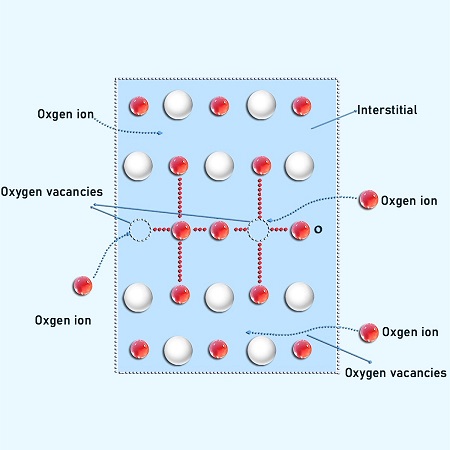Researchers from the Institute of Engineering Thermophysics (IET) of the Chinese Academy of Sciences (CAS) have introduced a novel study on advanced perovskite supercapacitors, explaining a dual energy storage mechanism in electrochemical method. This asymmetric supercapacitor cell achieves an energy density of 40.8 Wh kg-1 at a power density of 1688.3 W kg-1. This findings, detailed in a paper published in Cell Reports Physical Science, promotes the diversified development of miniature supercapacitors, including portable electronics and electric vehicles. Led by Associate Professor LIU Yu and Professor CHEN Haisheng, the study focuses on enhancing the performance of perovskite-based supercapacitors, particularly emphasizing the rock-salt phase (RP) perovskite electrodes.
The oxygen ions intercalation type supercapacitors stem from filling oxygen vacancies in the perovskite oxide via intercalation of electrolyte oxygen ions. An increased concentration of oxygen vacancies creates more available sites for oxygen ion intercalation, leading to higher pseudocapacitance. However, an excessive concentration of oxygen vacancies disrupts the delicate balance that maintains the integrity of the crystal lattice, which lead to the collapse or distortion of the perovskite crystal structure.
In order to break the intrinsic limitation of oxygen vacancies concentration in perovskites, A/Prof. Liu and Prof. Chen’s team introduce the metal-site deficiency in RP perovskite electrodes, which increased oxygen vacancy concentration and electronic conductivity, contributing to enhanced overall performance. It not only provided oxygen vacancy sites but also offered interstitial sites, which are conducive to anion intercalation. This layered perovskite electrode achieved a specific capacitance of 983.6 F g-1, surpassing the 403.3 F g-1 achieved by the single crystal perovskite.
“Building on these outcomes, our next steps involve further exploration and optimization of perovskite-based materials. We aim to fine-tune the design and delve deeper into the mechanisms driving oxygen intercalation pseudocapacitance. This study lays the foundation for continued advancements in material design and contributes to the ongoing development of energy storage technologies” Prof. Chen said.

The energy storage process with normal oxygen intercalation pseudocapacitance and interstitial oxygen intercalation. (Image by LIU Yu)
Contact:
LIU Yu
Institute of Engineering Thermophysics Chinese Academy of Sciences
Tel: 86-10-82544354
E-mail: liuyu@iet.cn
Web: http://english.iet.cas.cn/
 Download the attachment
Download the attachment
News